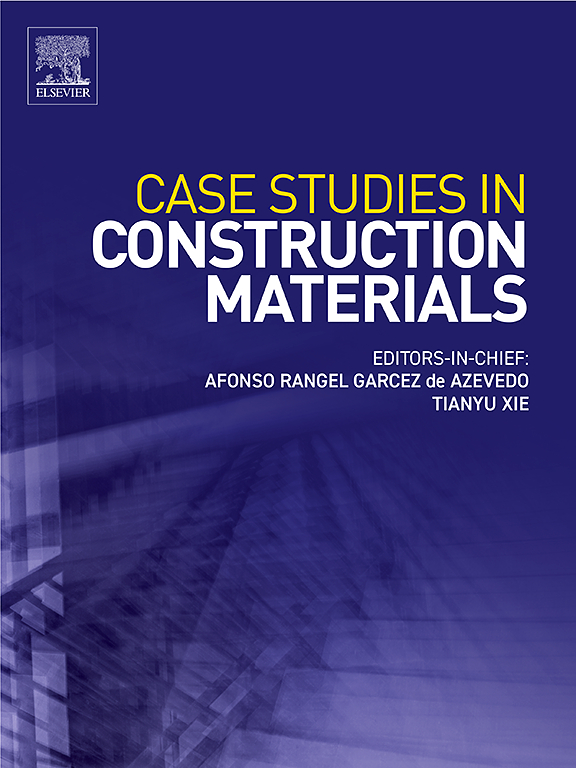Chloride threshold level determination: Call for test standardization to limit variations in experimental methodology and resolve inherent experimental and modelling detection challenges
IF 6.5
2区 工程技术
Q1 CONSTRUCTION & BUILDING TECHNOLOGY
引用次数: 0
Abstract
Chloride-induced corrosion significantly threatens the durability of reinforced concrete structures, leading to deterioration, costly repairs, and potential structural failures. Accurately determining the steel reinforcing bar (rebar) chloride threshold level (CTL) is crucial for predicting corrosion onset, optimizing material selection, and estimating the service life of these structures. An ensemble machine learning model was trained using literature CTL data. Despite achieving a mean absolute error of 0.218 % weight of binder, a root mean square error of 0.321 % weight of binder, and an R² value of 0.751 on unseen data, the model's performance reveals limitations due to the wide variability in reported CTL, stemming from disparities in experimental methodologies including set-up and corrosion detection techniques. After model development, this paper also investigates challenges associated with CTL evaluation by comparing literature practices and providing insights to enhance data reliability and comparability. Factors impacting CTL evaluation includes corrosion detection techniques, initiation criteria, chloride introduction methods, testing setup, exposure solution compositions, chloride concentration measurement techniques, and rebar concrete/mortar cover thickness. This paper focused on the largely ignored aspect of these factors, some of which are inherent and nearly non-circumventable, and will continue to lead to suboptimal performance of any CTL predictive model when not addressed. Recommendations for standardizing practices are proposed to improve CTL assessment consistency, reliability of developed CTL predictive models, and accuracy of service life modeling.
氯化物阈值水平测定:呼吁测试标准化,以限制实验方法的变化,并解决固有的实验和建模检测挑战
氯化物引起的腐蚀严重威胁钢筋混凝土结构的耐久性,导致结构恶化,维修成本高,甚至潜在的结构失效。准确测定钢筋氯离子阈值水平(CTL)对于预测腐蚀发生、优化材料选择和估计这些结构的使用寿命至关重要。使用文献CTL数据训练集成机器学习模型。尽管获得了0.218 %粘结剂重量的平均绝对误差,0.321 %粘结剂重量的均方根误差,以及0.751的未知数据的R²值,但该模型的性能显示出局限性,因为报告的CTL存在很大的可变性,这是由实验方法(包括设置和腐蚀检测技术)的差异造成的。在模型开发之后,本文还通过比较文献实践来研究与CTL评估相关的挑战,并提供提高数据可靠性和可比性的见解。影响CTL评价的因素包括腐蚀检测技术、起始标准、氯化物引入方法、测试设置、暴露溶液组成、氯化物浓度测量技术和钢筋混凝土/砂浆覆盖厚度。本文关注的是这些因素在很大程度上被忽视的方面,其中一些因素是固有的,几乎不可避免的,如果不加以解决,将继续导致任何CTL预测模型的次优性能。为提高CTL评估的一致性、开发的CTL预测模型的可靠性和使用寿命建模的准确性,提出了标准化实践的建议。
本文章由计算机程序翻译,如有差异,请以英文原文为准。
求助全文
约1分钟内获得全文
求助全文
来源期刊

Case Studies in Construction Materials
Multiple-
CiteScore
7.60
自引率
19.40%
发文量
842
审稿时长
63 days
期刊介绍:
Case Studies in Construction Materials provides a forum for the rapid publication of short, structured Case Studies on construction materials. In addition, the journal also publishes related Short Communications, Full length research article and Comprehensive review papers (by invitation).
The journal will provide an essential compendium of case studies for practicing engineers, designers, researchers and other practitioners who are interested in all aspects construction materials. The journal will publish new and novel case studies, but will also provide a forum for the publication of high quality descriptions of classic construction material problems and solutions.
 求助内容:
求助内容: 应助结果提醒方式:
应助结果提醒方式:


